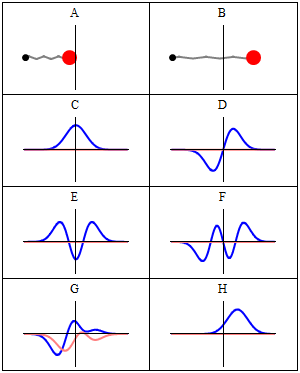Quantum Field Theory
- Introduction to Quantum Mechanics
- Wave-Particle Duality
- The Schrödinger Equation
- Quantum Operators and Measurement
- Quantum Mechanics of Systems
- The Dirac Equation
- Introduction to Quantum Electrodynamics (QED)
- Path Integrals and Quantum Mechanics
- Symmetries in Quantum Field Theory
- Quantum Chromodynamics
- The Higgs Mechanism
- Quantum Field Theory in Curved Space-Time
- Quantum Cosmology and Conclusion
Path Integrals and Quantum Mechanics
Quantum Oscillator Problem in Path Integral Formulation

Quantum mechanical model of a particle in a harmonic potential well.
The quantum harmonic oscillator is a cornerstone problem in quantum mechanics and provides a gateway to understanding more complex systems. In this unit, we will apply the path integral formulation to the quantum oscillator problem and explore the concept of coherent states.
Introduction to the Quantum Oscillator Problem
The quantum harmonic oscillator is a model that describes particles vibrating about an equilibrium position. It is a fundamental model that can be applied to various physical systems, such as the oscillations of a diatomic molecule or the oscillations of a quantum field.
The Hamiltonian of a quantum harmonic oscillator is given by:
H = p^2/2m + 1/2 mω^2 x^2
where p is the momentum operator, m is the mass of the particle, ω is the angular frequency, and x is the position operator.
Applying Path Integral Formulation
The path integral formulation, developed by Richard Feynman, provides a new perspective on quantum mechanics. It states that the probability amplitude for a system to go from one state to another is given by a sum over all possible paths that the system could take.
Applying this to the quantum harmonic oscillator, we can express the transition amplitude as a path integral over all possible paths, each weighted by a phase factor that is the action of the path.
The action for the harmonic oscillator is given by the integral over time of the Lagrangian, which for the harmonic oscillator is:
L = 1/2 m v^2 - 1/2 m ω^2 x^2
Understanding Coherent States
Coherent states are a particular type of quantum state of the quantum harmonic oscillator. They are eigenstates of the annihilation operator, which means they have well-defined phase properties and are the closest quantum mechanical equivalent to classical states.
In the path integral formulation, coherent states provide a convenient basis for calculations. They allow us to express quantum mechanical problems in terms of classical quantities, which can often simplify calculations.
Role of the Quantum Oscillator in Quantum Field Theory
The quantum harmonic oscillator plays a crucial role in quantum field theory. Each mode of a quantum field can be thought of as a quantum harmonic oscillator, and the creation and annihilation operators of quantum field theory are directly analogous to those of the quantum harmonic oscillator.
In conclusion, the quantum harmonic oscillator is not just a simple problem in quantum mechanics, but a fundamental building block for understanding more complex quantum systems. The path integral formulation provides a powerful tool for tackling this and other problems in quantum mechanics.